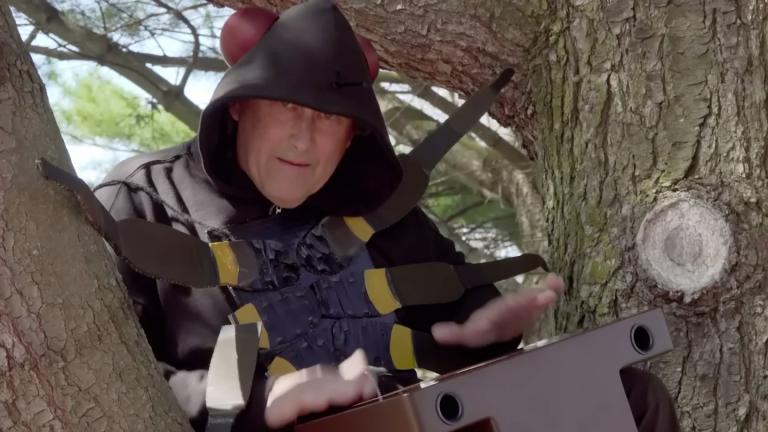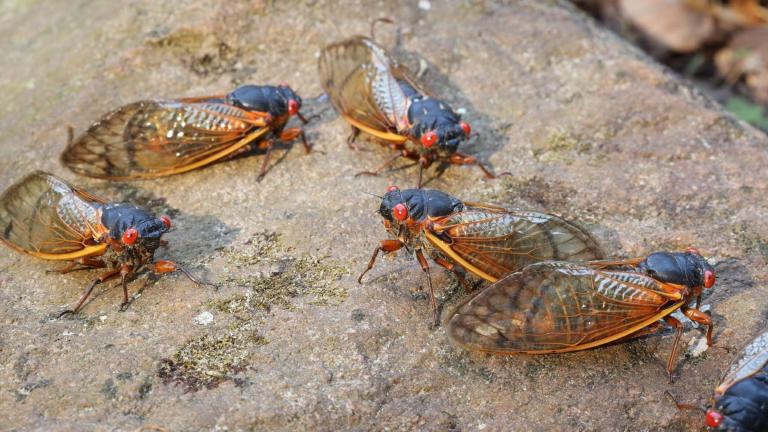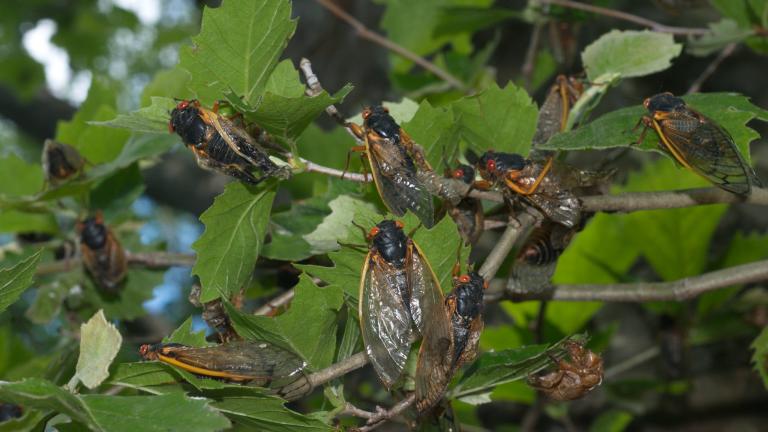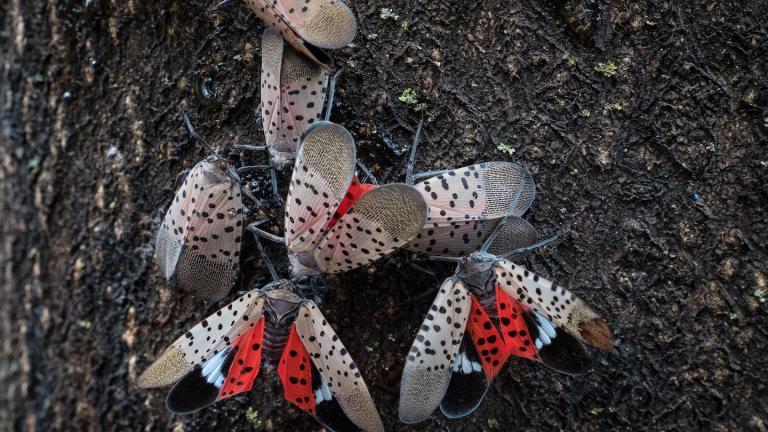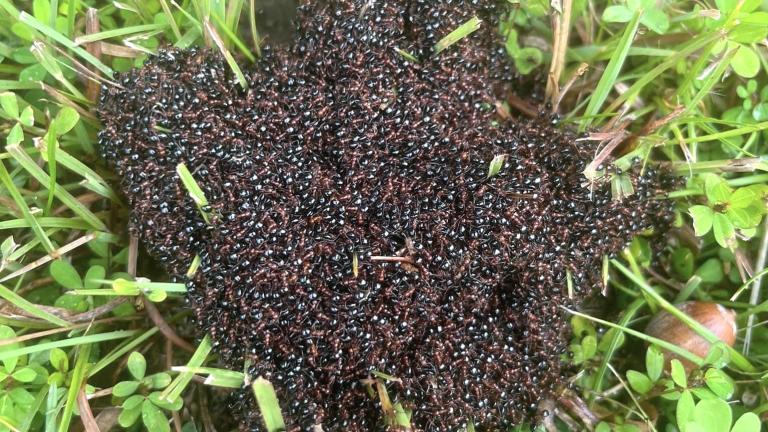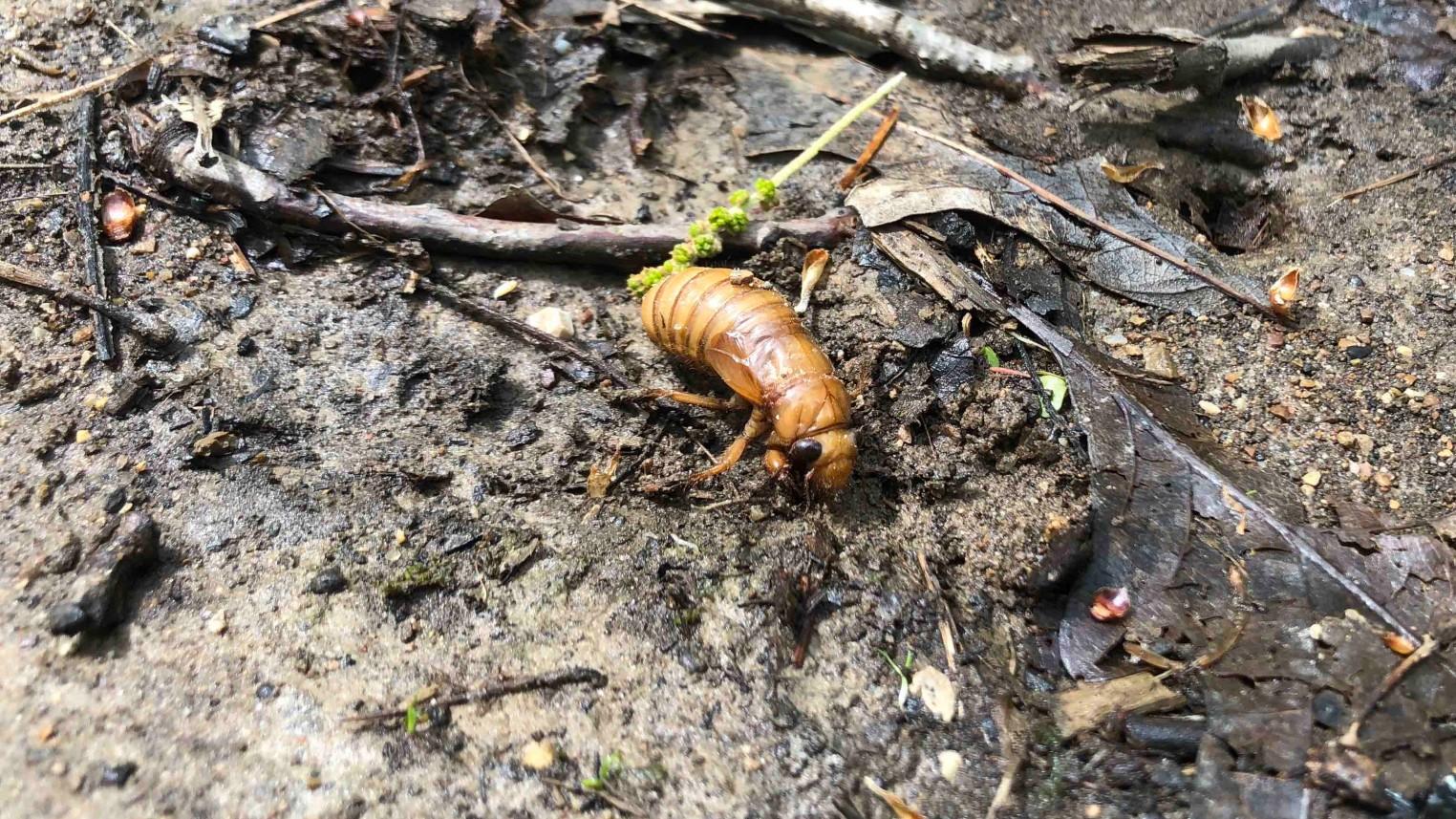 A periodical cicada nymph, flushed from its tunnel is pictured on April 28, 2024, in Cook County’s Palos preserve system. (Patty Wetli / WTTW News)
A periodical cicada nymph, flushed from its tunnel is pictured on April 28, 2024, in Cook County’s Palos preserve system. (Patty Wetli / WTTW News)
Walking the trails at north suburban Ryerson Woods over the weekend and again on Monday, Mark Hurley spotted what anyone else could be forgiven for thinking was an early emergence of Brood XIII, aka the 17-year periodical cicadas northern Illinois residents are awaiting with a combination of excitement and dread.
There, along the paths, were finger-sized holes in the ground and cicadas crawling nearby in the mud — weeks before the insects’ predicted mid-May mass uprising.
Video: A periodical cicada nymph is seen on April 28, 2024, in Cook County’s Palos preserve system. (Patty Wetli / WTTW News)
Could an uncommonly warm winter have thrown off the cicadas’ alarm clock? Has the onslaught begun?
Not likely, said Hurley, who speaks from experience.
A long-time veteran environmental educator with the Forest Preserve District of Lake County, Hurley is now prepping for his second periodical cicada emergence, in close consultation with entomologist Gene Kritsky, arguably the dean of U.S. cicada scholars.
What folks are noticing on trails — and Hurley hasn’t been the only person coming across cicadas in the Chicago region — are nymphs flushed from their homes by rain.
These cicadas have been digging their emergence tunnels, aka those finger-sized holes, to make their grand entrance after nearly two decades underground, only to be driven out prematurely during recent downpours, he said.
Brood XIII and its counterpart in southern Illinois, Brood XIX (which is on a 13-year cycle), are still waiting on soil temperatures to hit 64 degrees — essentially their “go” signal, according to Hurley.
“And they have to feel that soil temperature’s going to stay,” he added, meaning a sudden warm-up for a day or two isn’t likely to do the trick. “We’re going to need a solid week of really warm nights.”
In the meantime, it’s not uncommon for some cicadas to jump the gun, said researcher John Cooley, who’s been mapping cicada broods for years.
“In 2007, I saw a lone cicada wandering around in Cook County on 15 May. The big emergence in that location didn’t happen until 27 May,” Cooley told WTTW News via email.
Video: A periodical cicada nymph is seen coming out of its emergence tunnel on April 28, 2024. (Patty Wetli / WTTW News)
When cicadas receive their cue, they won’t trickle out in the dribs and drabs people have been observing.
“Once (emergence) starts, it starts,” Hurley said.
In 2007, he recalled, there were at least 10 solid nights of cicadas streaming from the ground. The nymphs then head for an object to climb — typically a tree — where they hang out as their exoskeleton splits and the adult cicada bursts forth.
Adults are still soft and milky white at this “teneral” stage, and also at their most vulnerable and edible, while they harden and darken, Hurley explained. Then they head to the treetops where the males begin their mating chorus, aka, deafening racket.
Hurley, for one, can’t wait. He'll be celebrating Brood XIII during Cicadafest at Ryerson Woods on June 9. He’s also hosting a Zoom chat with Kritsky on May 16, which is free and open to the public, with registration required.
To track cicada sightings and contribute your own, check out the Cicada Safari website and app.
More Cicada News:
- WTTW News Explains: Why Will There Be So Many Cicadas in Illinois This Year?
- The Cicadas Are Coming, Do Your Trees Need Protecting? Experts Weigh In
Contact Patty Wetli: @pattywetli | (773) 509-5623 | [email protected]

